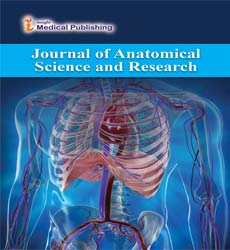An Update on Cost and Value Research in Anatomy Education
Samuel D Chumbley*
Department of Medicine and Health, University of Exeter, Devon, United Kingdom
- *Corresponding Author:
- Samuel D Chumbley
Department of Medicine and Health
University of Exeter
Devon, United Kingdom
Tel: +44 1923 224929
E-mail: sdchumbley@doctors.net. uk
Received Date: February 8, 2021 Accepted Date: February 22, 2021 Published Date: March 1, 2021
Citation: Chumbley SD (2021) An Update on Cost and Value Research in Anatomy Education. J Anat Sci Res Vol. 4 No.1: 2.
Abstract
The optimization of clinical care is expected to utilize evidence-based medicine. The design of medical curricula should be equally guided by contemporary research; however, within medical education, informed decision making is limited by the insufficient quantity and quality of consideration into cost and value. Fortunately, the literature of this field has recently become more promising, particularly within anatomy education.
Keywords
Cost-value analyses; Anatomy education; Cost effectiveness analyses
Description
Chumbley added to the discussion of cost and value in anatomy education by undertaking thorough cost reports of popular teaching interventions and demonstrating value-comparison. This report has significantly added to the methodological debates regarding value-estimation and yields practical application to individual stakeholders through its transparency, transferability and rigour. Jonathan and Stephen have since added to this discussion of cost and value in medical education. Jonathan produced a systematic guide for health professions educationalists to undertake cost and value analyses, while Stephen composed a viewpoint article that considers the application of these analyses in advancing anatomy education. These two pieces reinforce key messages by Chumbley, while addressing some of the limitations in their approach [1-3].
Both Jonathan and Stephen reiterate the necessity of cost-value analyses to maximising educational outcomes. Furthermore, they emphasise the relevance of contextualisation due to the innate subjectivity of value. While contextualisation was briefly discussed by Chumbley, the two more recent publications stress the importance of perspective. Since value can be considered from multiple stakeholders’ perspectives (such as students, institutions, governments etc.), Jonathan and Stephen emphasise that value analyses must clearly define whose perspective is being considered [2,3].
While the approach outlined by Chumbley included a variety of teaching approaches, it did not attempt to evaluate blended curricula. Stephen discussed the importance of this approach to anatomy teaching due to the specific outcomes yielded by some high-cost teaching interventions and not via low-cost alternatives. They went on to propose that future cost-value analyses should consider dose-response relationships to establish the minimum exposure that is required to achieve these more unique outcomes. This would optimise value in blended curricula by minimising exposure to high-cost teaching interventions while maximising exposure to low-cost alternatives, providing the same outcomes are achieved [1].
Jonathan echoes the importance of considering the breadth of educational outcomes in value-estimations but highlights the difficulty in doing so through Cost Effectiveness Analyses (CEAs). CEAs can only measure one outcome at a time, which hinders value-comparison as one approach may yield greater outcomes in one area but weaker in another. Chumbley used knowledge acquisition as the educational outcome in their evaluation, but as Stephen discusses the range of additional outcomes achieved by traditional approaches to anatomy education, these further outcomes should be included in value-estimations [1,3].
Chumbley demonstrated a CEA but did not include the sensitivity analysis and cost adjustment process, later recommended by Jonathan. Sensitivity analysis heightens transparency, which Chumbley sought to achieve, by permitting clear conclusions on the certainty of economical results. When this becomes fully integrated into future research alongside the commonplace confidence intervals of statistical results, the conclusions of cost value analyses will become harder to ignore [1].
Cost adjustment is suggested to be a significant part of costreporting, and while Chumbley demonstrates the robust costreporting process recommended by Jonathan, it overlooks this significant step. Cost adjustments allow for more valid currency conversion, by considering purchasing power, and enables accurate calculation of inflation. Jonathan uses examples to highlight the potential impact of these factors, which stress its absolute relevance [1,2].
The most exciting notion discussed by Jonathan and Stephan is the unexplored development of a cost-utility tool in education. Within the healthcare field, QALYs (Quality Adjusted Life Years) are a cost-utility tool regularly used to estimate the value of interventions. If a similarly accessible tool were to be developed for the education field, cost and value analyses of teaching interventions would be standardised, thereby promoting accessibility of results to various stakeholders [2,3].
Conclusion
The infancy of medical education economics is undeniable, but the progress in this field is exciting and commendable. Those stressing its necessity continue to add to the discussion, providing a platform that empowers curriculum-designers to make informed decisions that maximise value in medical education.
References
- Chumbley SD, Devaraj VS, Mattick K (2020) An approach to economic evaluation in undergraduate anatomy education. Anat Sci Educ.
- Jonathan F, David AC, Martin T, George R, Jennifer C, et al. (2020) How to conduct cost and value analyses in health professions education: AMEE Guide No. 139. Med Teach 1-15.
- Stephen M, Nalini P, Jonathan F, Lazarus MD (2020) Spending wisely: The role of cost and value research in the pursuit of advancing anatomical sciences education. Anat Sci Educ.
Open Access Journals
- Aquaculture & Veterinary Science
- Chemistry & Chemical Sciences
- Clinical Sciences
- Engineering
- General Science
- Genetics & Molecular Biology
- Health Care & Nursing
- Immunology & Microbiology
- Materials Science
- Mathematics & Physics
- Medical Sciences
- Neurology & Psychiatry
- Oncology & Cancer Science
- Pharmaceutical Sciences
